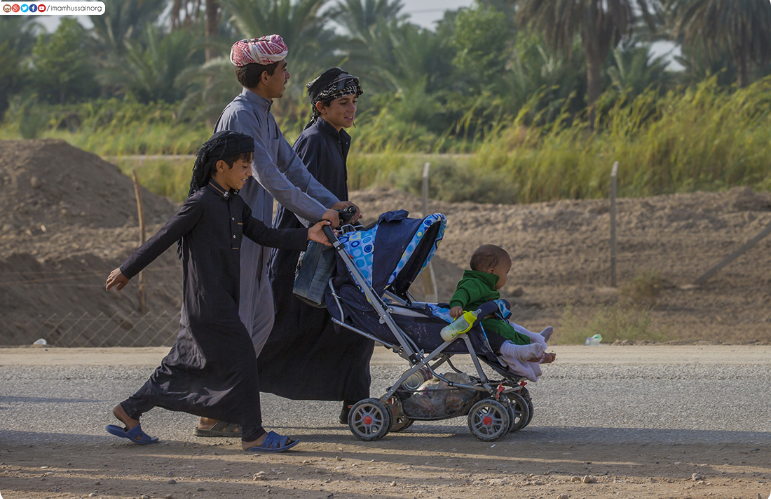The Arbaeen pilgrimage is not merely a recurring annual occasion, but rather a profound spiritual station in which the nation renews its covenant with the Master of Martyrs, Imam Hussein ibn Ali (peace be upon him). It is a moment to recall the features of sacrifice and redemption, and to draw from the wellspring of patience and steadfastness. It embodies all the meanings of loyalty to the divine principles for which Hussein gave his life, until it became one of the sacred rites of God, as expressed in His words:
“And whoever honors the symbols of Allah—indeed, it is from the piety of hearts”.
Historical Roots of Arbaeen
The historical foundations of Arbaeen are tied to two parallel events in history:
-
The arrival of the captives of Ahl al-Bayt (peace be upon them) to Karbala on the 20th of Safar, 61 AH, after a bitter journey from Kufa to Sham and then back toward Medina. Despite the wounds of captivity, they returned dignified with honor. That day marked the continuation of the media mission of Karbala’s revolution, where the pure blood was joined by the resounding word carried by Lady Zaynab al-Kubra and Imam al-Sajjad (peace be upon them).
-
The visit of Jabir ibn Abdullah al-Ansari, the noble companion of the Prophet (peace be upon him and his family), to the grave of Hussein (peace be upon him) on that same day. This stands as the first recorded visitation in history, establishing the Sunnah of the Arbaeen pilgrimage and declaring the beginning of a spiritual tradition that has endured through the centuries.
Doctrinal Significations
From a theological perspective, commemorating Arbaeen is the embodiment of the tradition of Imam al-Sadiq (peace be upon him): “The visitation of Arbaeen is among the signs of a believer.” It is not merely a visit but an open declaration of loyalty and a renewal of the covenant to walk the path of truth, regardless of sacrifice. It affirms that Hussein’s martyrdom is ever-living, and that the march to Karbala on Arbaeen is a living expression of the reality that Hussein’s blood still flows in the conscience of the nation, his message transcending its own era to speak to all times.
During this pilgrimage, Muslims of all sects and nationalities unite in a living image of the “one nation,” rallying beneath the banner of Imam Hussein, far from narrow divisions. It revives the noble values embodied by Hussein—patience, generosity, defense of the oppressed—inspired by his timeless words: “I did not rise up in vain, nor as an arrogant oppressor… I rose up only to seek reform in the nation of my grandfather.”
A Global Message of Justice and Freedom
The Arbaeen of Hussein is not simply a sorrowful commemoration; it is an educational course and a global pulpit to deliver the voice of justice and freedom. It reminds Muslims that their duty does not end with tears and mourning but extends to carrying the banner of reform and resisting oppression wherever it may be found. The sight of millions walking toward Karbala sends a clear message to the world: that the values for which Hussein sacrificed remain alive in hearts and capable of uniting millions around the project of truth.
A Renewed Covenant
The Arbaeen of Hussein is not just a date on the calendar—it is a renewed covenant between Hussein and his followers, between blood and conscience, between a past that forged glory and a present that strives to preserve it. It is the proclamation that Hussein’s voice remains, and that his immortal slogan “Hayhat minna al-dhilla” (“Far from us is disgrace”) will continue to shine as a beacon for the free until the end of time.

